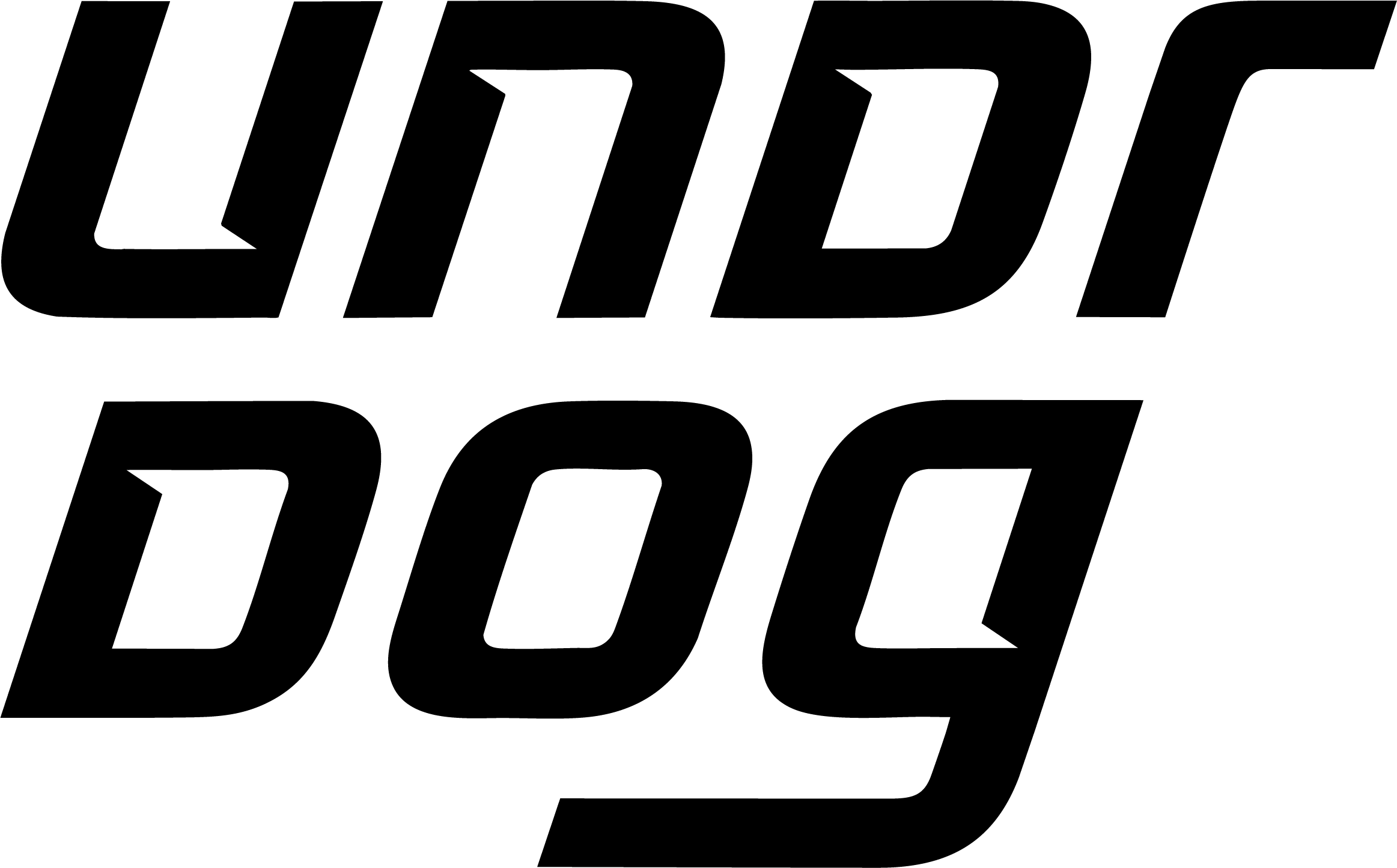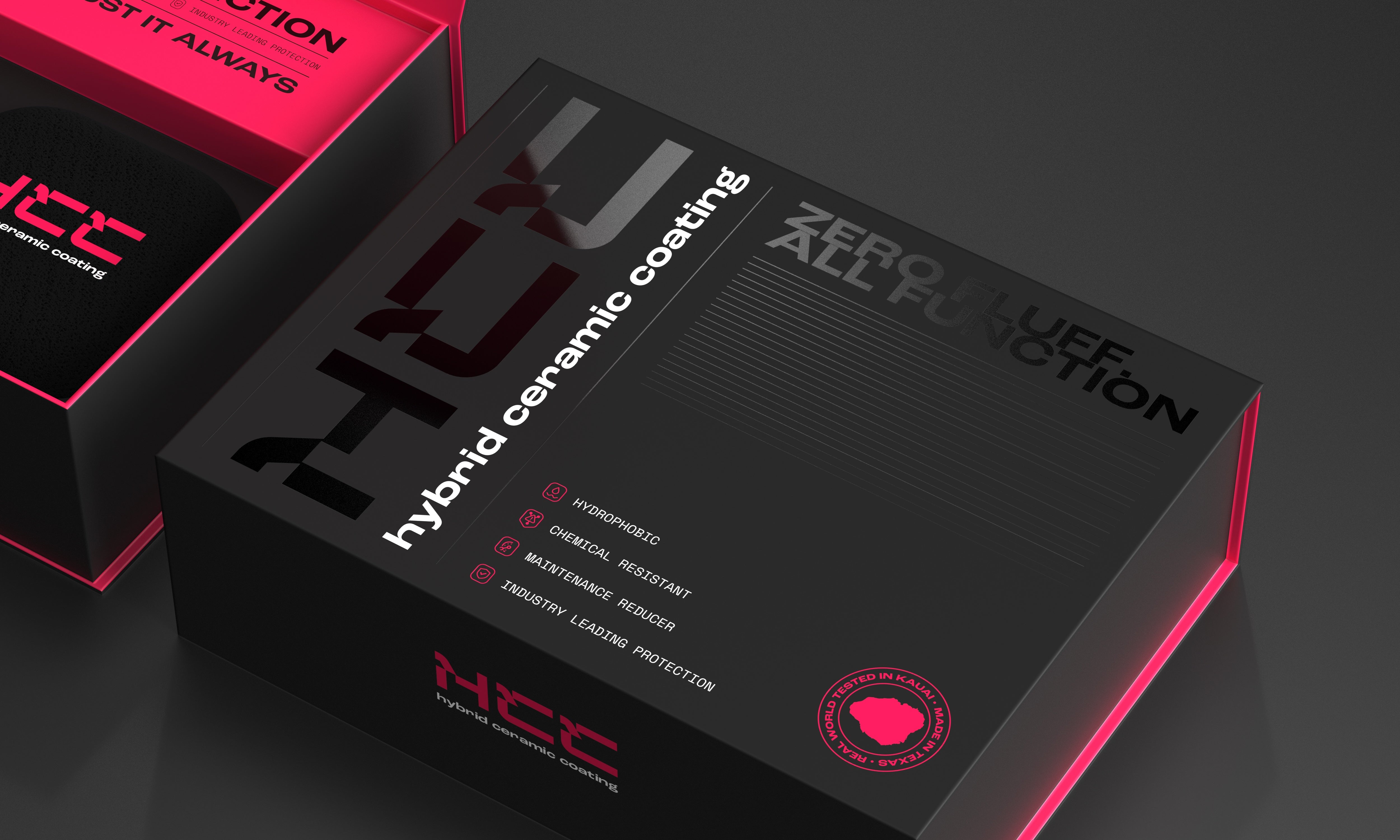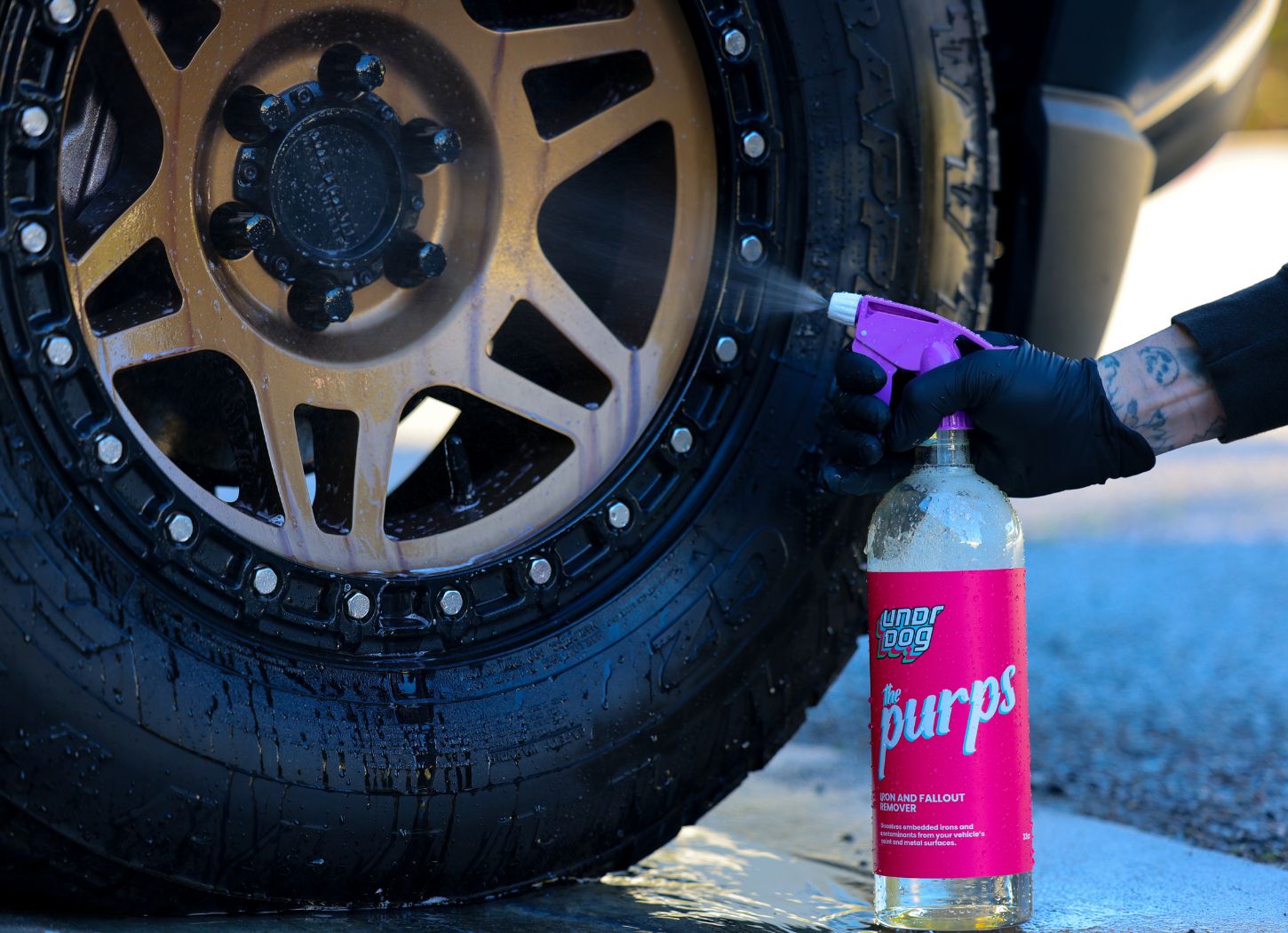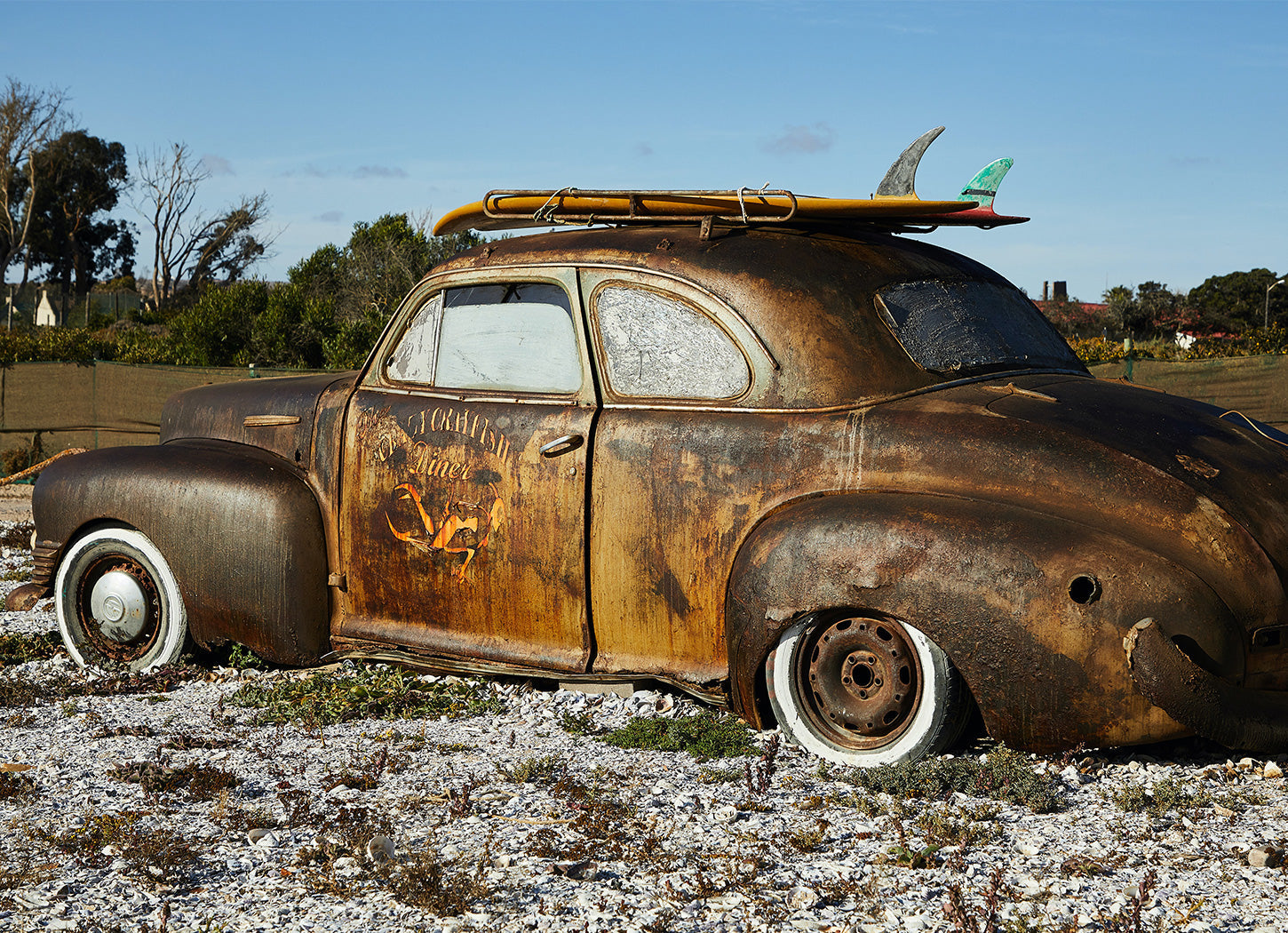If your paint is looking dull or faded, if it's rough and you’ve noticed orange or black dots, or even rust, chances are your car is loaded with contaminants. This guide will teach you how to remove rust and other contaminants using The Purps.

Decontaminating your car’s paint isn’t the most exciting way to spend your time, but it’s a must if you want an optimum finish on your vehicle.
The thing is, your car picks up little bits of fallout on the road. There isn’t much you can do to avoid it, as the contamination is caused by numerous environmental and artificial sources.
So contaminants are a common phenomenon. The problem occurs when you don’t remove them soon enough and they bond to the paint’s surface and start corroding and expanding.
Some time back, the industry-standard method for decontamination involved removing the layer of affected paint through wet sanding and/or heavy polishing. Thanks to the rapid development of car care technology, we now have products that offer a safer and easier way to get the job done - iron & fallout removers like The Purps, which have now become an essential part of a detailer’s arsenal.
What is Fallout

Fallout is a term applied to contamination coming from different sources, that bond to car paint. These particles naturally have a microscopic outer edge that is very jagged, which allows them to get stuck to any surface easily.
Actually, the most annoying thing about fallout is how strongly it is embedded, which makes it a drag to remove!
If you have a light-colored car, you probably noticed black or orange specks, especially around the wheels. If your car is dark, the contaminants may be difficult to spot, as they aren’t nearly as apparent as dirt or dust, but they can certainly be felt. If you ever run your hand across your car's paint and it feels almost like sandpaper, that’s the result of contaminants.
Over time, the contamination builds up. Eventually, it affects the way light is reflected from the paintwork, resulting in a gloss reduction. At this point, you cannot remove the fallout by simple shampoo washing. In fact, washing could cause damage if you’re using the wrong tools.
Leaving fallout on your paint is a bad idea. The particles will start to oxidize over time, causing rust and corrosion that cannot be polished away.
What Causes Fallout
Contamination comes from all sorts of places. It can be generated from almost any application where there is metal-on-metal contact.
If you drive by or park near a train station, airport, or factory, even if you leave your car near someone grinding or cutting metal, you will almost certainly have fallout on your paint.
When you buy a new car from a dealership, it has to be transported by boat or train, which makes it easily susceptible to fallout. A couple of weeks that this process takes is plenty of time for the paintwork to become contaminated. On the other hand, older cars suffer greatly from onboard factors, such as brake discs and pads, leading to fallout on wheels.
Types of Fallout
Iron Fallout
The first type of fallout is small particles of iron that come from a variety of different places – your car's breaks, a railway track, or even a factory nearby.
Iron Fallout is hard to see and practically impossible to avoid.
On a microscopic level, these sharp shards of iron penetrate the paint. With “fresh” brake dust, braking friction makes it hot, helping the particles burn far into the surface. Once these shavings next see rain, condensation, or moisture, they rust and expand, rupturing the paint. This destroys both the aesthetic and protective qualities of the vehicle’s finish.
Airborne Overspray
The second type of fallout includes tree sap, bug splatter, concrete sealers, pesticides, and liquid waste from manufacturing plants.
Sticky sap dripping down from leaves can cover your entire vehicle and prevent beading. Road grime, dust, and grit stick to the sap like glue, and without the right products can be a nightmare to get rid of. During the summer, honeydew is another issue. The pollination and high insect population also amplify the issue of bug remains.
Most pesticides contain harsh chemicals that act quickly to kill weeds. Their toxic ingredients such as glyphosate react instantly when in contact with car paint. Delaying the removal from the affected surface can cause heavy discoloration.
Tar, Bitumen & Traffic Film
The third type of fallout usually builds up on the lower sections of the car, especially if it's frequently driven on newer roads.
If the road is freshly laid and hasn’t completely dried, tires pick up the tar and flick it over the vehicle’s bodywork. This is more of a problem in the summer months as tar and bituminous products become softer in the heat.
Film build-up is also very common. When it rains, the water on the surface of the road picks up all the dirt that lies on the ground. Your car gets sprayed with it and once the rainwater dries up, the grime ends up on your paint. The road can become covered in contaminants in dry weather too, but the film’s formation is increased during the rainy season.
Why Remove Fallout
Fallout is an issue you should tackle immediately for multiple reasons.
Car Corrosion

Soon, the contaminants start eating away at the car’s clear coat, allowing moisture to penetrate and damage the metal underneath the paint surface. This leads to the formation of rust and paint delamination, which you won’t be able to polish off.
Polishing compounds contain specialist abrasives that gradually strip the upper sections of the clear coat. However, if contaminants are present, the polishing pad will absorb them. This not only reduces the effectiveness of the compound but can also cause scratching.
Coating Application

Apart from paint damage and metal deterioration, contamination prevents finishing products such as coatings, sealants, and waxes from working properly. All these products are designed to bond to paint, and if contamination is covering its surface, you will have issues with the application, and experience decreased longevity.
Think of it like sticking a piece of tape to a dusty surface.
The finishing product won’t be able to adhere to the surface as the contamination is in the way, which is why it may not last as long as manufacturers have found in their tests.
So your surface needs to be perfectly cleaned from contaminants, not only to avoid the risk of swirls but also to maximize the benefits of these finishing products. Removing fallout is simply part of proper decontamination.
Can You Prevent Fallout
Truth be told, you can’t fully protect your car from fallout if it’s being driven.
The best way to avoid contamination is to keep your vehicle sheltered indoors. If you don’t have a garage, an outdoor cover can help. However, make sure it’s breathable, as a waterproof cover will trap condensation, which can damage the paint and cause rust issues.
To prevent corrosion and the damage contamination can cause, wash your car regularly with car shampoo. Try to do it as soon as possible after rain or snowfall.
By adding a transparent layer that bonds to the vehicle’s painted surfaces, a protective coating can help keep some of the fallout from attaching to your car.
How to Remove Fallout
If you’ve neglected your car wash schedule for a while and allowed contaminants to embed themselves into your car’s paint, you will need to perform paint decontamination.
Paint decontamination is a process of breaking down and removing build-up and contaminants embedded in your car's paintwork.
There are two types of decontamination: chemical and physical. Their aim is the same, but the equipment used and finish of these methods differ.
The first step in deciding the course of action when tackling fallout is to determine which type you’re dealing with. It’s a good idea to start with chemical decontamination and proceed with physical if the fallout still remains on the vehicle.
Chemical Decontamination

The reason why you should always start with chemical decontamination is that it reduces the likelihood of swirling and marring inflicted by the claying process.
The products used for chemical decontamination are iron and fallout removers.
Sometimes, they’re referred to as “bleeding iron and fallout removers”, because their active ingredient, thioglycolic acid, reacts with contaminants and turns them purple or red. This makes for a very rewarding experience when detailing.
Undrdog Iron and Fallout Remover, The Purps, instantly turns iron particles into a heavy purple. It works like a liquid clay bar, dissolving embedded contaminants that can cause future damage to your vehicle's paint and metal surfaces. This makes it a fantastic product to use when prepping to coat your vehicle. It’s also a great way to save time and energy, as the results are immediate, and using the product requires little elbow grease.
Be warned: Iron and Fallout Removers stink! Ours is no exception, and the reason is the ingredients. Some manufacturers have tried to tackle this issue, but if you want to have the same potency, there is no way to completely get rid of the horrible smell.
On the plus side, you should avoid breathing the products in anyways. Wear a protective mask and gloves, and always use them in a well-ventilated area.
Physical Decontamination

Physical decontamination involves either a clay bar or clay mitt. It’s a time-consuming process and a riskier way of treating fallout.
Clay is capable of removing embedded contaminants due to its abrasive nature. It’s also very sticky so it pulls them out of the pores of the paint, creating a smoother surface.
The thing is, physical contamination can inflict marring into the paintwork, which means your car will require polishing. The risk of this increases when you’re working with a highly contaminated surface. The clay bar will get dirty faster and the dirt will get rubbed into your paint, inflicting damage to the clear coat.
That’s why you should always use an iron and fallout remover before claying your car. And even then, if you decide to perform physical decontamination yourself, make sure you have the tools and enough time to polish the car afterward if any damage is inflicted.
Clay bars still have a place on your detailing shelf though. They remove more than just iron from your paint’s surface - tar, tree sap, bird lime, and paint overspray, and can be a great help in achieving that show-car look.
How to Apply The Purps
Undrdog Iron and Fallout Remover is super simple to use. Let’s go through the steps together:
Step 1 - Wash
Wash your vehicle in the shade using Undrdog Soap to remove any dirt build-up.
Step 2 - Spray On
While the vehicle is still wet, spray The Purps on the paint and wheels, avoiding plastics.
We do not recommend diluting it as this method is not going to be more cost-effective. You may end up with a surface that is not properly decontaminated, which will ultimately mean you will need to reapply the product.
Step 3 - Let it Dwell
In about 2-5 minutes the paint will begin to turn purple where there are iron contaminants embedded.
Attention: do not allow the product to dry on any surface of your vehicle.
Step 4 - Rinse Off
Rinse well and wash away the embedded contaminants.
The Purps is a very potent product and you probably won’t need to repeat the process. However, when dealing with severe contamination, it’s better to make sure you got it all out. To check, spray the product again on a section of the vehicle that was most affected, and observe if there is a reaction. If not, you’re good to go!
For more information on product usage, check out this article. To get answers to frequently asked questions about our iron remover, check out this one.
When to use The Purps
Paint Decontamination
The Purps is an essential step when decontaminating your car’s paintwork and prepping it for paint correction and protective coating application.
Although paint decontamination isn't necessary every time you wash your car, it's still an extremely important step when it comes to any full detail.
If you take good care of your vehicle, you won’t need to perform chemical decontamination very often. Washing your car regularly will keep most of the contaminants from building up in the first place.
However, we recommend decontaminating your paint with The Purps at least twice a year - once before winter, to get it ready for the protection you will use to see out the cold season, and once after, to eradicate all traces of the salt, brake dust, and grime from the roads.
If it’s a daily driver, or it’s naturally exposed to a lot of fallout (for example, if it’s parked near a railway often or its brake pads throw out a lot of dust), you can use the product more often.
asdf
How to Check if Your Paint is Contaminated
To determine whether or not your car's paintwork is contaminated, thoroughly wash the vehicle and run your fingers over the wet panels. Fallout-free paint will feel smooth, almost like glass.
Also check for rust-colored spots, especially around the lower levels or rear of the car. These are metal oxide particles that have embedded themselves into the paint and are much more obvious on lighter vehicles. Inspecting your vehicle is best done in direct sunlight.
Coating Preparation
To apply a protective coating like Undrdog Pro to your car, you need to get its paint completely smooth. This will make the installation process seamless, and ensure that the coating bonds well with the paint, making it last longer.
Even if your vehicle looks perfectly clean, don’t skip this step. It will likely result in the coating not performing properly and having decreased durability.
The Puprs will help you get rid of all the hidden contaminants, invisible to the human eye, that are stuck to your paint. If you spray it on and it doesn’t change color before running off, you will know that your surface is clean enough to proceed with the coating application.
Hydrophobicity Recovery
If your car is protected with Undrdog Pro, The Purps is a great way to bring back any lost hydrophobic properties of the coating and enjoy better water-beading.
However, if you have a wax or sealant on, test the product out in an inconspicuous spot first to make sure it causes no damage.
Where To Use The Purps
Contrary to popular belief, iron and fallout don’t only appear on the lower half of your car. The contaminants can get embedded in pretty much any area on any vehicle, including the roof.
Still, there are areas on your car that are a lot more prone to fallout than others. Namely, behind the wheels, the front bumper, and the hood - this is where the brake dust is most likely to settle on the paint. If left to sit there for longer periods, the contamination can become very hard to remove and cause corrosion. That’s why it’s beneficial to use The Purps more frequently on these areas.
Note: It’s a common misconception that an iron and fallout remover is the same as a wheel cleaner, because of the color-changing bleeding effect that some of them share. This isn’t the case though. Wheel cleaners do exactly what you think they do - clean wheels, and iron and fallout removers break down the contaminants embedded in them. So don’t expect your neglected wheels to come up perfectly clean by just using an iron remover by itself.
The Purps is designed for use on paint, including matte and satin finishes, and wheels. It’s completely safe for painted wheels and almost all types of rims, except chrome. If applying to chrome, be careful - it can cause damage and discoloration. We recommend conducting a small surface test first.
Aside from your vehicle, you can use The Purps to decontaminate things like lawnmowers and other garden equipment, as well as rusty outdoor metal furniture, tools, machinery, and concrete.

Why You Need The Purps in Your Workshop and Tool Kit
It dissolves all contaminants. The Purps is a potent iron and rust remover that acts like a liquid clay bar. Its active ingredients work to remove rust, dirt, oils, and grease, as well as all the embedded fallout from your vehicle.
It’s a quick-acting product. No need to wait to see the results. In just a couple of minutes, your paint will begin to bleed purple, showing you where the contamination is.
It prevents future damage. Rust is unsightly, but what’s even more important - it causes degradation that can severely damage your vehicle if you don’t remove it soon enough.
It improves coating durability. The Purps is the best product to use before installing a protective coating. It helps to achieve a deeper and longer-lasting bond between the paint and the coating.
To Sum Up
If you’ve noticed contamination on your vehicle’s paint, you’ve got two options: using an iron and fallout remover like The Purps, or claying your vehicle.
Chemical decontamination is the way to go if you don’t have issues with deeply embedded fallout. It’ll get the job done without the risk of scratching your car and it needing polishing afterward. Also, it’s very effective for breaking down contaminants in tight spots that are difficult to reach when cleaning.
If your car feels smooth after chemical decontamination, there is no need to clay it. Also, if it has a matte paint finish or a protective coating installed, this process could result in damage.
Physical decontamination is only necessary when the paint still feels rough after using an iron and fallout remover. However, keep in mind that iron particles are very small and can be missed by the clay bar. That’s why it’s a good idea to employ both decontamination techniques when detailing a highly contaminated vehicle.
In any case, the key is removing the fallout sooner rather than later, so keep an eye out and inspect your car every couple of weeks.





4 comments
MichaelJag
Official Sports Betting Website Linebet
Roberthaica
https://avenue18.ru/
Ernesthit
casino online vulkan
ArthurDok
Вулкан
Leave a comment
This site is protected by hCaptcha and the hCaptcha Privacy Policy and Terms of Service apply.